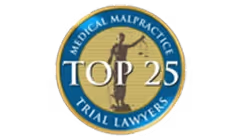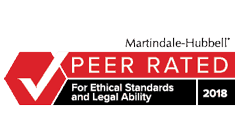The birth of a child is a joyous occasion. When that landmark moment gets marred by someone's negligence, you must take action. Your claim could ensure the medical staff members are held responsible for your child's birth injury. And the compensation you recover could secure your child's financial future as they deal with their birth injuries.
But navigating a birth injury lawsuit can present challenges. A NY birth injury lawyer can stand up to malpractice insurers and fight for fair financial compensation for your child's injuries.
Understanding Birth Injury Lawsuits
A birth injury lawsuit is a type of medical malpractice lawsuit. It focuses on injuries suffered during the labor and delivery process. It can also cover injuries suffered after birth. Both mothers and children can suffer birth injuries.
Because a birth injury is a form of professional negligence, you must show that the injury resulted from a failure to provide reasonably prudent medical care. Medical malpractice lawsuits often require expert testimony to illustrate what the doctors, nurses, and other medical providers could have done differently to produce a positive outcome.
One common characteristic of birth injury cases is the massive damages incurred. When children suffer birth injuries, they may be permanently disabled. A birth injury lawyer helps the baby and their parents obtain the financial compensation that the child may need to rely upon for the rest of their life.
Without this compensation, the parents might struggle to cover the child's necessary medical expenses for treatment, physical and occupational therapy, and medication.
Can You Sue a Doctor for a Birth Injury?
Yes, you can sue a doctor for a birth injury to a mother, a baby, or both a mother and baby. But not all adverse outcomes support birth injury claims. You must show that the mother or child suffered their injury as a result of medical negligence. This type of case can require intensive investigation and analysis by a NY medical malpractice lawyer and their expert witnesses.
Who Should Be Held Responsible After a Birth Injury?

Any individual or entity that owed your child a duty of care and failed to uphold it may be held responsible for your child's serious injury.
Doctor or Obstetrician
Some errors doctors can commit include:
- Misdiagnosing the child or mother.
- Missing signs of fetal distress.
- Using instruments carelessly or improperly.
- Failing to address complications or adverse reactions when they develop.
The doctor often bears ultimate responsibility for what happens during the labor and delivery process. Even if the doctor does not personally commit a medical error, they are responsible for supervising all the other medical providers in the room.
Hospital or Birthing Center
A hospital or other medical facility can bear liability for birth injuries. This liability can come from two sources. First, the hospital or medical facility may commit negligence. This can happen when it negligently hires unqualified medical staff or mixes up medical records.
Second, a facility may bear vicarious liability for birth injury medical malpractice. The doctrine of vicarious liability arises from the employer-employee relationship. It might not apply when a healthcare provider works as an independent contractor.
Nursing Staff and Other Medical Professionals
You may have a medical malpractice claim against any medical professional who failed to meet the standard of care in your child's birth. These professionals can include:
- Physician assistants
- Nurses
- Nursing assistants
- Testing laboratories
- Pharmacies and pharmacists
- Anesthesiologists
A healthcare provider can be held liable if they knew or should have known that their actions were unreasonable under the circumstances. For example, medical malpractice occurs when an anesthesiologist overprescribes a sedative, causing a child to die during childbirth.
Medical Equipment Manufacturers

If a piece of medical equipment failed during the delivery of your child, you might have a product liability case rather than a medical malpractice case. Manufacturers are strictly liable for defective equipment they put into the stream of commerce, regardless of whether they knew about the product's defect.
Your injury attorney only needs to prove the product was defective when it left the manufacturer's hands due to its design, manufacture, or instructions.
Pharmaceutical Companies
Like medical equipment manufacturers, pharmaceutical companies have strict liability for their drugs. When a medical provider properly administers a drug based on the manufacturer's instructions and the baby suffers an adverse outcome or side effect, the parents may have a case for recovering compensation from the pharmaceutical company. Again, you must show the medication had a defect due to its design, manufacture, or warnings.
Joint and Several Liability
Joint and several liability refers to a legal doctrine that allows you to recover none, some, or all of your compensation from any of the responsible parties. For example, suppose that you sue the doctor, the hospital, and the nurses for your child's injury. If you win, you can recover the entire amount from the hospital since it probably has a larger insurance policy than either the doctor or the nurses.
Elements Required to Establish a Birth Injury Claim

To establish a birth injury medical malpractice claim, your birth injury lawyer must prove three elements. These elements are standard in every negligence claim. Your lawyer may also need to defend you against any claims of contributory negligence.
1. Standard of Care: Defining the Expected Level of Care During Childbirth
The standard of care sets the bar for how a medical provider must treat patients. It is created by the doctor-patient relationship.
The standard of care is determined by "reasonableness." To define the standard, you determine what a reasonable healthcare professional would have done in the same situation. For example, if the baby has an elevated heart rate, the standard of care might require a doctor to determine whether the cord is wrapped around the baby's neck.
2. Negligence and Breach of Duty: Establishing Failure to Meet the Standard of Care
You must show that the hospital or its medical practitioners failed to meet the standard of care. This means they will be held liable if they acted or failed to act in the way that a reasonable provider in the same situation would have acted. To prove this element, you must have witnesses and records showing what happened. You must also have experts to show that what happened failed to meet the standard.
3. Causation: Linking the Negligence to the Birth Injury
Causation links the breach of duty to the losses. It includes two parts. A negligent act is a cause-in-fact when it falls in the sequence of events that end with the injury. The act is a proximate cause if an injury was the reasonably foreseeable consequence of the act.
For example, suppose an anesthesiologist fails to review the mother's records, and the mother experiences a fatal allergic reaction to a drug. The failure was the cause of the death.
4. Contributory Negligence
Contributory negligence happens when the responsible parties escape being held liable because of the victim's negligence. This is best illustrated through an example.
Suppose the mother had been drinking alcohol throughout the pregnancy and, as a result, the child had a low birth weight. Even if the medical providers committed medical malpractice, they may be able to shift at least some of the responsibility for a child's injury to the mother using this doctrine.
Suing a Doctor for Birth Injury: A Step-by-Step Process

Before filing suit, you will undertake several steps:
- Meet with a lawyer to explain your situation.
- Analyze who can be held liable and how much compensation you can seek.
- Gather evidence and records showing what happened.
- Prepare a demand letter for the doctors and hospital responsible.
- File an insurance claim with the malpractice insurers for the hospital and medical providers.
- Address any claim denials and negotiate for a fair settlement of your claim.
- File a lawsuit against the hospital and medical professionals who should be held liable.
- Hire expert witnesses to support your legal and factual arguments.
If your case does not settle, your lawyer will present your evidence and arguments to a jury.
What Is the Statute of Limitation for Suing a Doctor for a Birth Injury in NY?
New York gives you 30 months to file a lawsuit against doctors, hospitals, and other providers for medical malpractice. Your time starts on the date of the medical error.
Under some circumstances, the statute of limitation for medical malpractice cases starts on the date you discover or reasonably should have discovered the medical error. Thus, if you do not learn that your child has paralysis until several months after the birth, your time starts upon discovery.
Get in Touch with Jacob D. Fuchsberg Law Firm for Personalized Assistance with Your NY Birth Injury Case
Your child's injury can have devastating effects on your family. But you have options for pursuing a medical malpractice case against the hospital and doctor responsible.
A medical negligence lawyer from the Jacob Fuchsberg Law Firm can analyze your situation and determine whether the hospital and doctor are legally responsible for your child's injuries. They can also help assess your losses to determine the financial compensation you can pursue.
Contact us online or call (212) 869-3500 for a free consultation to start seeking justice for your child's birth injury.
FAQ

.svg)











